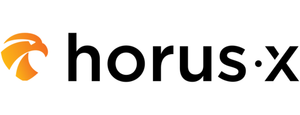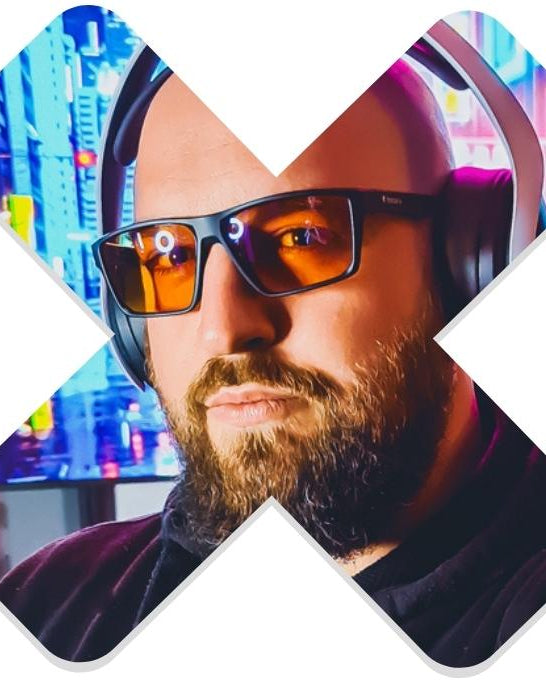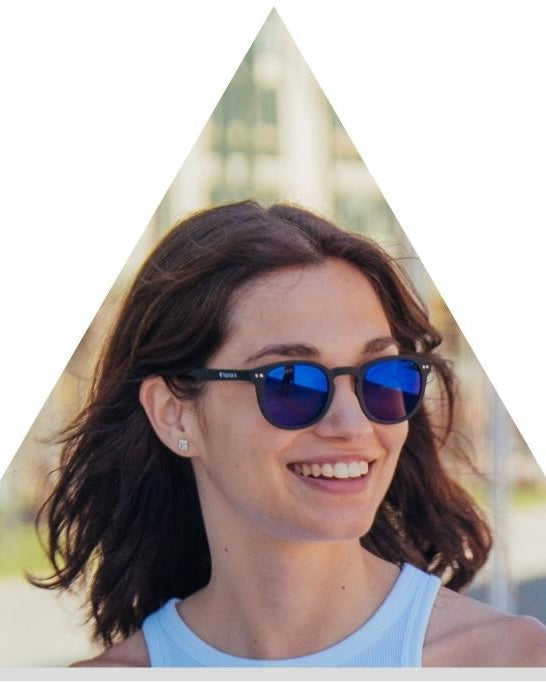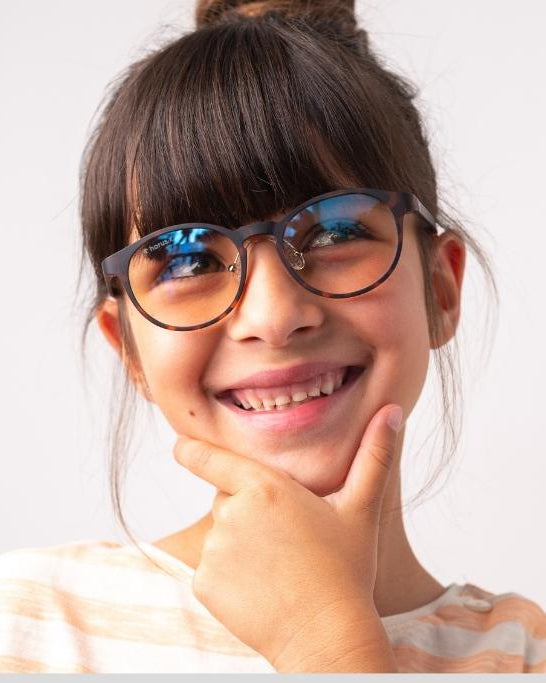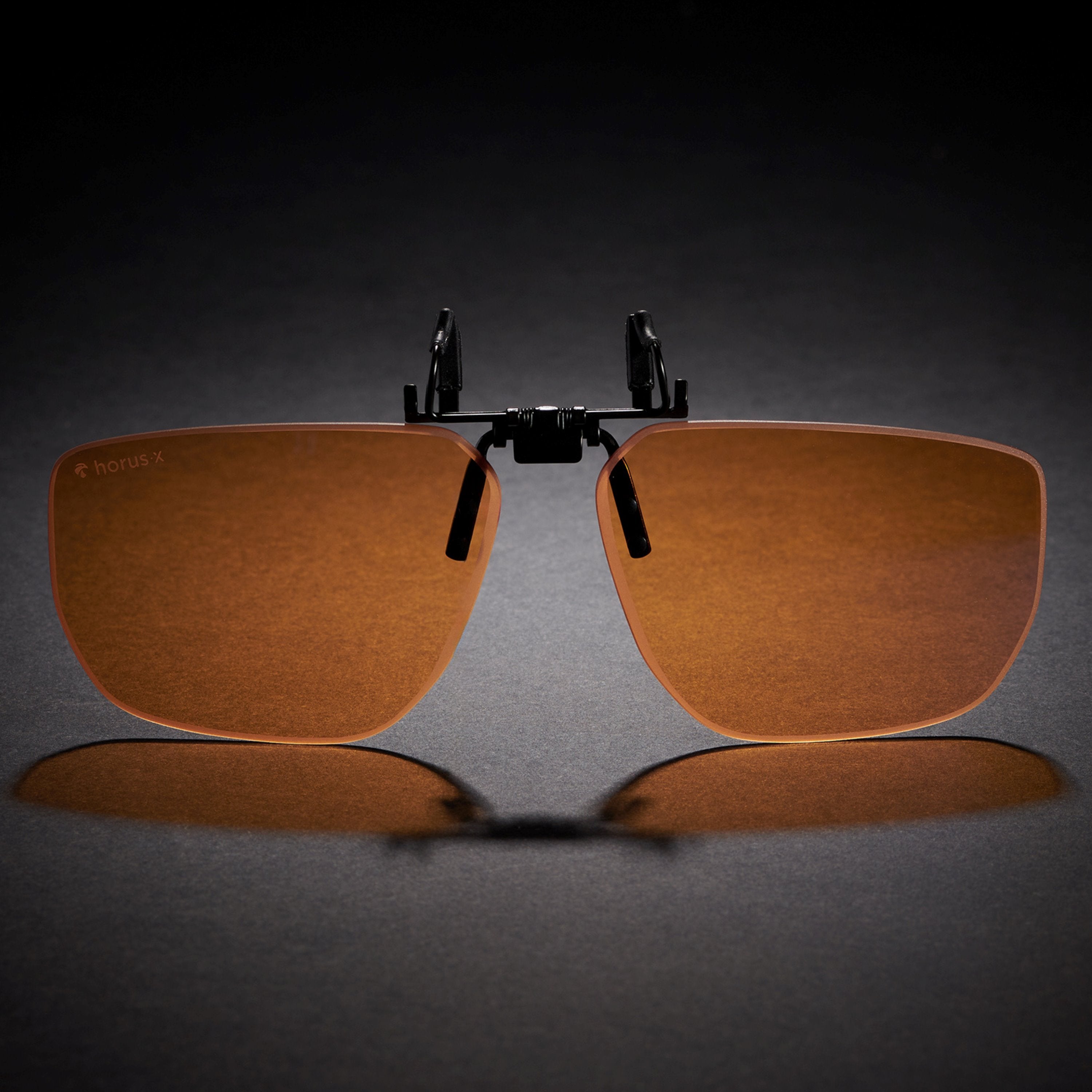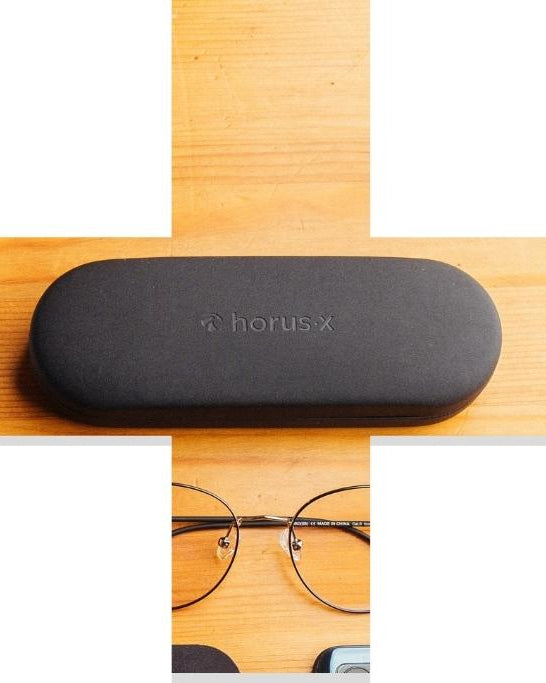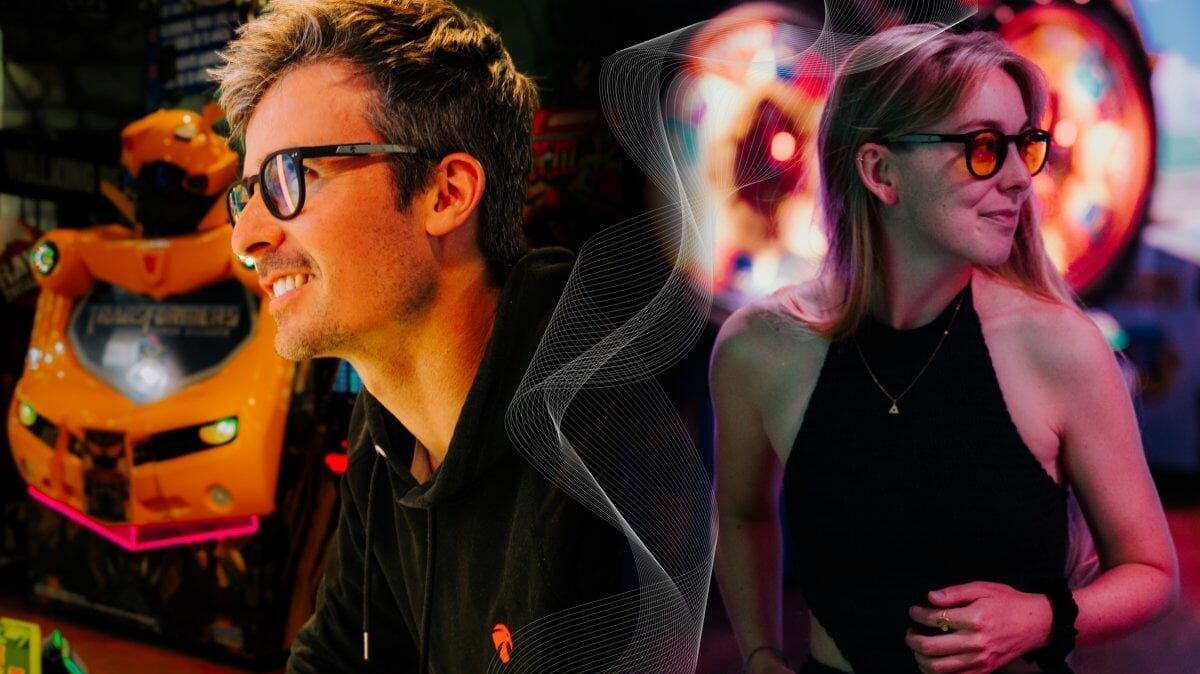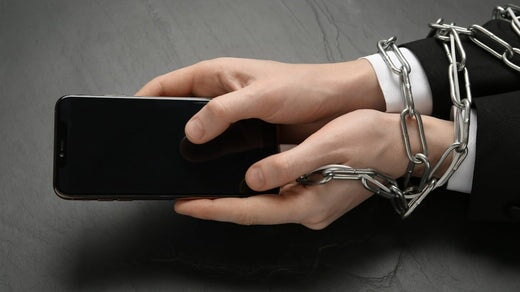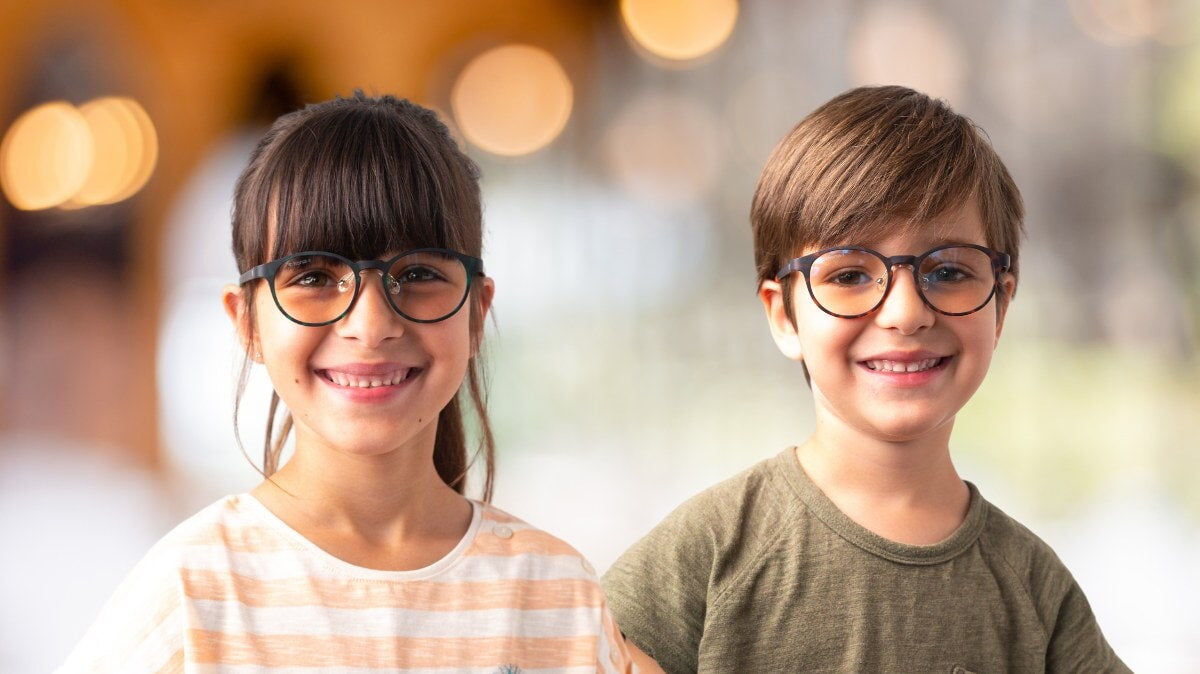We know we’ve been making a big fuss about the harmful effects of blue light and advocating for your eyes to stay safe from its negative impacts… but today, we’re flipping the script and singing its praises!
Don't worry, we're still super strict about protecting your peepers against blue light! However, in this article, we're exploring the world of blue light therapy and how it can fight acne.
The lowdown on blue light
We’re pretty sure you’ve heard of blue light (you are on our site after all) but a little refresher never hurt anyone.
Red, orange, yellow, green, and blue rays, each with their own unique wavelength and energy level, make up the light spectrum.
Specifically, wavelengths of blue light fall between 380 and 500 nanometers, making it the shortest wavelength visible to the human eye.
While blue light in natural light helps regulate our body's natural rhythms, (yay!) overexposure to artificial blue light can lead to some not-so-fun effects (nay!).
Overexposure to blue light from screens or LEDs can cause:
- 😴 Trouble sleeping,
- 🤕 Headaches,
- 👀 Eye irritation,
- 👁 General eye fatigue.
➡️ Yikes! Lucky for you, our practical guide will help you keep your eyes protected and enjoy your screen time without the nasty side effects: the truth, dangers and solutions of blue light.
The effects of blue light therapy for acne
We may give blue light a bit of a bashing, but it’s not all doom and gloom! Quite the opposite actually, as light therapy based on blue or white light has been proven effective in fighting depression.
In recent years, phototherapy has gained popularity in offices and homes alike, especially for skin troubles like acne. Each colour of light has a specific effect on the skin, and treatment using light-emitting diodes can effectively target certain skin problems.

To fight acne, a combination of blue light and red light is used:
- 🔵 Blue LED light therapy has a helpful anti-bacterial effect on inflammatory acne causing bacterium: propionibacterium acnes 🦠
- By zapping those P acnes, we prevent its growth and keep the acne breakouts at bay.
- 🔴 Red LED light therapy is healing, but unlike the judgment cast on healer characters in gaming (you know who you are 👀), it’s actually highly valued for its anti-inflammatory and collagen-boosting powers!
According to the experts’ studies, photo modulation (that’s another name for LED-based treatments) is the real deal. It's like the Master Chief of skincare - imperfections, blackheads, acne, lesions, oily skin, it can deal with it all!
With that being said, this is all very new information - we still need more studies like this one to confirm the full potential of blue light therapy.
Lighting up the benefits of blue light therapy
So, why use phototherapy as an acne treatment?
The use of light therapy has gained attention as a potential alternative for treating acne, thanks to the not-so-great side effects, unexpected results, and limitations of existing treatments like antibiotics and drug therapies.
We can see why an aesthetic or laser treatment alternative is appealing! It’s carried out using the cold light of a UV-free LED lamp, meaning it can boast a no-pain, no-side-effects method.
It's important to note that this isn't an excuse to spend even more time in front of your screen - this treatment is done using a special LED light therapy device, preferably by a trained dermatologist.
In other words, gluing your face to your phone screen isn’t going to cut it.

It's also worth mentioning that although studies are starting to show positive results, there's still not enough data to fully understand the effectiveness of light therapy against acne. However, for young patients with moderate acne, multiple sessions of 10 to 20 minutes could lead to visible results after a few weeks.
While we can't promise that light therapy will be a miracle cure for your skin problems, it’s not worth ruling it out just yet as an alternative to the traditional treatment methods.
Some examples of research and studies on blue light and acne:
🔬 In a 2004 study, 65% of the 28 participants who underwent eight sessions of blue light therapy over four weeks reported improvements in their condition.
🔬 Another study in 2011 compared the effects of light therapy and a placebo. The study consisted of 30 people, and those who received the blue light treatment saw results earlier than those who received the placebo.
🔬 In a Japanese study, eight out of ten individuals with severe acne observed significant reductions in their imperfections after just two sessions per week, with no pain or side effects to worry about.
The disadvantages of blue light acne therapy
While this technique seems promising, we need to acknowledge it’s not all sunshine and roses. Only a few independent studies have been conducted on the subject, so we don’t know the full ins and outs yet.
The price of sessions can vary greatly depending on where you go. You might end up paying anywhere from around 40€ per session to a whopping 1500€ for a complete package. Yikes!
“No worries,” you think to yourself, “I’ll just do it at home!” Unfortunately, device prices are still pretty steep, starting from $100!

Acne annihilator: our tips for fighting acne
Before jumping headfirst into treatments, let’s start with the basics. Skincare is your friend!
- Cleanse your skin morning and evening with a gentle product. Don't go overboard with harsh chemicals that can make the problem worse. We're not suggesting you cleanse with unicorn tears, but something gentle and effective will do the trick.
- Remove your make-up every night. No one wants to wake up with panda eyes, unless you're trying to channel God of War’s Kratos. In which case, we’ll stay out of your way.
- Moisturise your skin daily: If you're prone to oily skin, opt for a water-based, alcohol-free moisturiser. Shiny Pokémon are great - shiny faces, not so much.
- Adopt a healthy lifestyle: Drink enough water to hydrate your skin cells - staying hydrated is crucial for healthy skin. And remember, a balanced diet rich in nutrients, vitamins and minerals can help too. Don't forget to sneak in some dark chocolate, it's good for the soul (and the skin). And if you’re a gamer, a healthy diet can enhance your performance greatly!
- Protect your skin from UV rays with sunscreen (and your eyes too, with anti-blue light sunglasses) which protects from premature ageing.
- Resist the urge to pop those spots! You might think it's satisfying, but it can actually make things worse by causing inflammation and scarring. Stick to watching those pimple popping videos online if you really need some skin squeezing action.
When in doubt, consult a professional dermatologist or skincare expert - that’s what they’re there for!

Blue light therapy vs. acne: Final thoughts
🔵 Blue light is not only harmful: It helps our body to adjust to the day and night cycle, and guess what? It can even be used to treat your skin! We’re getting Jekyll and Hyde vibes…
💡 The secret lies in the combination of blue and red LED lamps - the dynamic duo that works wonders for your skin. Blue to blast away bacteria and red to ramp up healing.
🧑 🔬 The effects of phototherapy are still in early study stages. While they might show promising results, we need more time and research to fully understand the potential benefits and risks of blue light therapy. So we definitely recommend consulting with a professional to see if it's suitable for you.
➡ But don't forget, blue light therapy or no, taking good care of your skin is crucial! Cleanse it regularly, moisturise it, and live a healthy lifestyle. And, please, resist the urge to pop that pimple!
